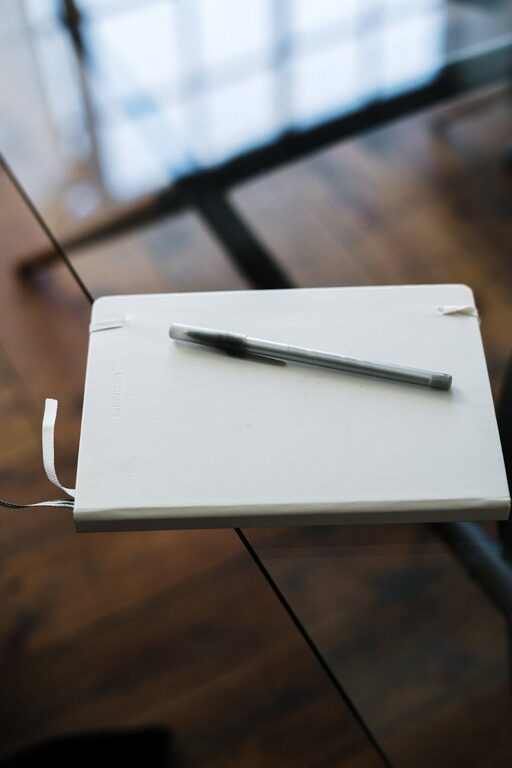How to Choose a Notebook You’ll Actually Use Every Day
Choosing the right notebook might seem like a simple task, but many people end up with notebooks that sit unused on their desks. Whether you need a notebook for journaling, note-taking, planning, or creative writing, picking one that suits your habits and preferences is key to actually using it consistently. This guide walks you through the important factors to consider so you can find a notebook you’ll love and want to use every day.
Why Choosing the Right Notebook Matters
A notebook is more than just paper bound together. It’s a tool to capture your ideas, track your progress, and keep your thoughts organized. When you select a notebook that matches your needs, writing becomes enjoyable instead of a chore. On the other hand, the wrong notebook can feel frustrating, leading you to abandon it quickly.
Here are some benefits of choosing a notebook wisely:
– Encourages regular writing and creativity
– Helps maintain focus and organization
– Fits seamlessly into your lifestyle and work habits
– Lasts longer and holds up well over time
Consider Your Purpose
Before shopping, identify how you intend to use your notebook. This will guide your choice of size, format, and features.
Common Notebook Uses
– Journaling: Personal reflections, gratitude lists, emotions
– Note-taking: School, work meetings, conferences
– Planning: To-do lists, goals, schedules
– Creative Writing: Stories, poetry, brainstorming ideas
– Sketching or Drawing: Art and doodles alongside notes
Knowing your primary use makes it easier to decide between lined, dotted, graph, or blank pages, and other details discussed next.
Choose the Right Size
Notebook sizes range widely, and picking one that fits your daily routine is essential.
Popular Sizes
– Pocket (A6 or smaller): Fits in your bag or pocket, great for quick notes and on-the-go use.
– Medium (A5): The most popular size – portable yet roomy enough for detailed notes.
– Large (A4): Ideal for extensive note-taking or sketching with lots of space.
Ask yourself:
– Will you carry it everywhere or keep it on your desk?
– Do you prefer compact notebooks or spacious pages?
Paper Type and Quality Matter
The feel of paper affects your writing comfort and pen suitability.
Factors to Think About
– Weight: Measured in GSM (grams per square meter), thicker paper (80-120 GSM) prevents ink bleed and ghosting.
– Texture: Smooth paper works well with gel pens, while rougher paper suits pencils.
– Color: White pages brighten up your writing; cream or off-white pages are gentler on the eyes.
If you plan on using fountain pens or markers, invest in high-quality paper to avoid frustration.
Page Layout: Lines, Dots, Grids, or Blank
Each page style offers different benefits depending on your use:
– Lined: Traditional for writing and note-taking.
– Dotted: Flexible for sketching, drawing, or bullet journaling; provides subtle guidelines.
– Grid: Helpful for diagrams, charts, and neat writing.
– Blank: Perfect for freeform drawing and creativity.
Some notebooks even combine layouts or have perforated pages for easy removal.
Binding and Durability
How your notebook is bound affects how it lays flat and lasts over time.
Binding Types
– Spiral-bound: Pages lay flat easily, but covers can bend or tear.
– Thread-sewn (case-bound): Durable, elegant, and often lies flat when open.
– Glue-bound (perfect bound): Sleek but may not lay as flat, prone to page loss.
– Disc-bound: Allows page removal and rearranging, versatile and expandable.
Consider where and how you will use your notebook to choose the right binding style.
Additional Features to Look For
Modern notebooks sometimes include extras that make note-taking easier and more enjoyable.
– Built-in bookmarks or elastic bands for closure
– Numbered pages to keep your notes organized
– Index pages to locate sections quickly
– Pockets for storing loose papers or receipts
– Perforated pages for tearing out notes neatly
Bonus features should support your workflow without adding unwanted bulk.
Don’t Forget Your Personal Style
Your notebook should inspire you. Choose colors, covers, and designs that suit your personality. Whether it’s a minimalist cover, a bold pattern, or a classic leather finish, enjoying the look and feel of your notebook increases the chances you’ll use it regularly.
Test Before You Commit
If possible, try out a few notebooks before buying one:
– Write a few lines to check paper quality
– Feel the weight and see how comfortable it is to carry
– Open and close to test the binding
Some stationery stores allow flipping through sample notebooks, which helps you make a confident choice.
Tips for Making the Most of Your Notebook
Once you’ve chosen your ideal notebook, here are some ways to stay motivated and keep using it:
– Set a simple daily goal (e.g., one page of journaling or notes)
– Use it consistently for a specific task to build a habit
– Customize sections with tabs or markers
– Combine writing with sketches or stickers if that inspires you
– Review your notes periodically to see your progress
Final Thoughts
Choosing a notebook you’ll actually use comes down to understanding your needs, lifestyle, and personal taste. By considering size, paper quality, layout, binding, and extra features, you can find a notebook that feels just right. Remember, the best notebook is the one that encourages you to write, plan, or create without hesitation. Happy writing!


